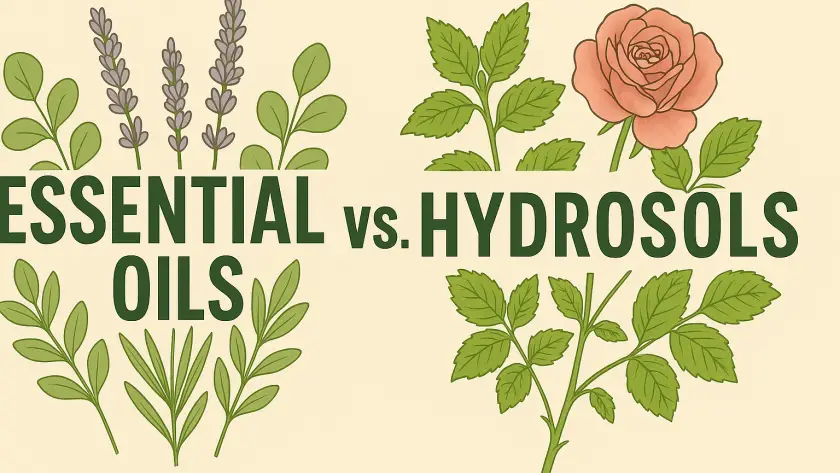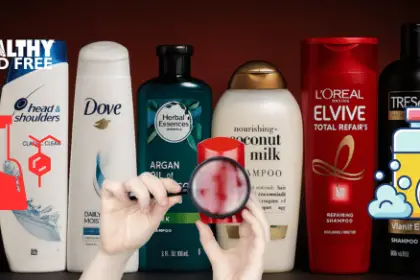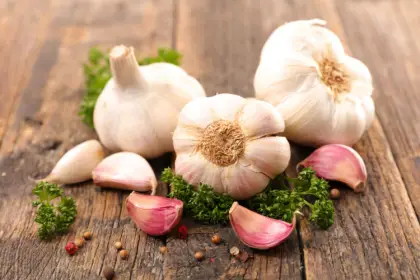How Essential Oils Work
Essential oils are very concentrated plant extracts. They’re usually obtained by steam-distillation or cold-pressing parts of plants (flowers, bark, leaves, roots, etc.). (Wikipedia)
They work in a few ways:
- Via the olfactory system: you inhale the volatile compounds and they trigger responses in your brain (e.g., mood, stress, relaxation) through the limbic system.
- Via topical application: they can interact with skin, even enter small amounts into the bloodstream (though this depends a lot on formulation, dilution, and the oil in question).
- Via diffusion into the air: you can use diffusers, sprays, etc. to saturate a space with aroma.
Because they are so concentrated, essential oils pack a punch — in a good way when used safely, but in a risky way if misused. For example: skin irritation, allergies, phototoxicity (sun sensitivity), etc.
In short: essential oils = potent botanical extracts. Great when applied properly, but demanding.
What Hydrosols Are And How They Differ
Hydrosols (also called floral waters, herbal distillates, hydrolats) are essentially the “water phase” left over (or produced alongside) when you steam-or-hydro-distill plant material to get essential oils.
Here’s what makes them distinct:
- They contain water-soluble plant compounds (and microscopic droplets of essential oils, but only very small amounts) rather than the full oil concentrate.
- Their aroma is much softer, gentler, more subtle than essential oils.
- Because of the lower concentration of active aromatic compounds, they tend to be less irritating, more skin-friendly, and more versatile in everyday use (including for people with sensitive skin).
In short: hydrosols = gentle botanical waters. They carry the plant’s essence in a lighter, easier way.
Why “Softer and Gentler” Matters
If you ask me (and you did), here are the practical reasons why hydrosols often win for daily use and for broader audiences:
- Lower risk of irritation: Because they’re far less concentrated than essential oils, you’re less likely to trigger skin irritation, phototoxicity, or unpleasant side-effects.
- Easier to use: You don’t have to dilute them heavily, you can spray them, mist them, apply more liberally.
- Multi-purpose: Because they are mild, you can use them on face, body, hair, even as room mist or pillow spritz — broader utility.
- Suitable for sensitive users: Kids, older skin, reactive skin, people who avoid strong fragrances — hydrosols fit better.
- Cost-effectiveness: Because less concentration and less risk, you can dose more liberally and still be safe.
The Real Chemical Difference: What Each Contains
Essential oils and hydrosols are not just different in strength — they’re different in chemical composition. They each carry different compounds from the plant depending on whether those compounds dissolve in oil or in water. That’s why they behave differently on the skin, in the air, and inside the body.
What Essential Oils Contain (Oil-Soluble Compounds)
Essential oils capture the fat-soluble aromatic molecules — these are strong, potent, and concentrated. They are responsible for the bold scents and the powerful therapeutic punch, but they also carry a higher chance of irritation if you use them undiluted.
Essential oils are rich in:
- Terpenes (like limonene, pinene, linalool) – mood, stress, and sensory effects
- Sesquiterpenes – grounding, calming actions
- Phenols – strong antimicrobial action (but also more irritating)
- Aldehydes & Ketones – potent physiological effects, must be used carefully
These compounds are hydrophobic, meaning they do not dissolve in water, which is why essential oils must be diluted in a carrier oil before applying to skin. They’re highly active, powerful — and require respect.
What Hydrosols Contain (Water-Soluble Compounds)
Hydrosols collect the water-soluble chemistry of the plant — a whole category of therapeutic compounds that never make it into essential oils. These compounds are naturally gentler, cooling, and more skin-supportive.
Hydrosols are rich in:
- Plant Acids (like rosmarinic or caffeic acid) – reduce redness, calm inflammation
- Flavonoids – antioxidants that support skin repair
- Polyphenols – help protect the skin barrier and fight irritation
- Tannins – toning and pore-refining effects
- Hydrophilic Terpenoids & Micro-droplets of Essential Oil – subtle aromatic therapeutic effect
- Trace Minerals from the Plant – nourishing and balancing
These compounds dissolve directly into water, making hydrosols:
- Gentle enough for daily use
- Safe to spray directly on skin
- Ideal for sensitive, reactive, or easily irritated skin types
Hydrosols don’t replace essential oils — they offer what essential oils don’t have.
The Bottom Line
- Essential oils = potent, oil-soluble, concentrated, targeted use.
- Hydrosols = gentle, water-soluble, calming, everyday use.
They complement each other — not compete.
But for frequent, skin-direct, spray-on-the-body use?
Hydrosols are the smarter, softer, safer play.
Quick summary of differences
| Feature | Essential Oils | Hydrosols |
|---|---|---|
| Concentration | Very high | Much lower |
| Aroma | Strong, intense | Mild, soft |
| Use-cases | Targeted aromatherapy, dilution needed | Sprays, mists, general toning, daily use |
| Risk of irritation | Higher | Lower |
| Suitable for who | Experienced users, specific uses | Wider audience, general wellness |
Why I like Omica Organics’ Hydrosol Mist
Now, you are probably wondering which brand is best. So, here’s what I found about Omica Organics and their hydrosol-based mist. I
- Their website shows a product: Omica Organics Magnesium Oil Spray with Biodynamic Organic Lavender and Rosemary Hydrosol (4 fl oz / 118 ml) priced at just $30.00. (Omica Organics)
What Makes Omica Organics Worth Noting:
- They use certified organic/biodynamic hydrosols and mention small-batch, hand-harvested, careful production. (Omica Organics)
- They are transparent about ingredients and production.
- They position their hydrosol product as gentle toning/misting body spray rather than heavy oil blend — which matches the “gentler” narrative.
Of course: check the bottle size, read the label, and verify it’s truly the hydrosol mist you were thinking of (their product might be body spray / toner rather than pure hydrosol in 8-10 oz spray bottle). But overall it supports your argument: you can get an organic hydrosol product for ~$30 with a decent volume, while often essential oils at the same price are tiny bottles of very concentrated oil.
Click Here To Visit Omica Organics And Get This Botanica Hydrosol Mist For Yourself.
Use The Discount Code: HealthyWildFree to get 10% off your order.




